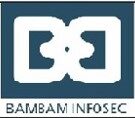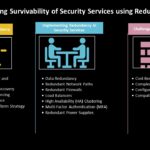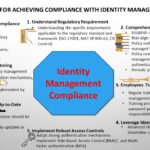
Solar Eclipse April 08, 2024
Cybersecurity frameworks serve as essential tools for organizations to improve their cybersecurity posture and ensure compliance with regulatory requirements. With a strategic and systematic approach to cybersecurity framework implementation, organizations can better navigate the challenges of the digital age and safeguard their operations, reputation, and future success. This article explores the differentiation of cybersecurity frameworks and best practices for their implementation.
While there are several cybersecurity frameworks, they generally serve common purposes to enhance an organization’s resilience to cyber threats, protect sensitive data, and safeguard its reputation and business continuity in an increasingly digital world. Furthermore, each framework has its unique focus and approach.
Differentiation of Cybersecurity Frameworks
Regulatory vs. Voluntary Frameworks: Some cybersecurity frameworks, such as the NIST Cybersecurity Framework (CSF) and ISO/IEC 27001, are voluntary guidelines developed by industry organizations or standards bodies. Others, like the Payment Card Industry Data Security Standard (PCI DSS), General Data Protection Regulation (GDPR), and Health Insurance Portability and Accountability Act (HIPAA), are regulatory mandates specific to certain industries.
Scope and Focus: Cybersecurity frameworks vary in their scope and focus areas. Some frameworks provide comprehensive guidance covering all aspects of cybersecurity, while others specialize in specific domains such as cloud security (e.g., CSA Cloud Controls Matrix) or industrial control systems (e.g., NIST SP 800-82) or Data privacy (GDPR)
Maturity Levels: Certain frameworks, such as the Capability Maturity Model Integration (CMMI) and Cybersecurity Maturity Model Certification (CMMC), incorporate maturity levels or maturity models to assess and improve an organization’s cybersecurity maturity over time.
Global vs. Industry-Specific: While some frameworks are designed for global applicability across diverse industries, others are tailored to specific sectors or regions. For example, the European Union Agency for Cybersecurity (ENISA) develops cybersecurity frameworks and guidelines specific to European Union member states.
Implementation Approach for Cybersecurity Frameworks
Implementing a cybersecurity framework requires careful planning, commitment, and ongoing effort. A general approach will be covered to aid organizations looking to adopt a cybersecurity framework.
Assessment and Gap Analysis
Begin by conducting a thorough assessment of the organization’s current cybersecurity practices and capabilities. This involves conducting risk assessments, security audits, and compliance reviews. The gap analysis identifies deviation between existing controls and the requirements of the chosen cybersecurity framework.
Implementation Roadmap
Develop a detailed implementation plan, outlining specific tasks, timelines, responsibilities, and resource requirements for deploying and achieving compliance with the selected cybersecurity framework. Consider factors such as resource availability, budget constraints, and organizational readiness when planning the implementation. In this phase, it is quite important to collaborate with key stakeholders including executive leadership, Information Technology (IT), Human Resources (HR), finance, security teams, and compliance departments.
Implementation
Executing the implementation plan includes the establishment of security controls, policies, procedures, and technologies required to meet the framework’s requirements. Seamlessly integrate cybersecurity practices into existing business processes, systems development lifecycle (SDLC), and IT operations. Remember to prioritize key initiatives based on risk assessments and business priorities. Additionally, foster collaboration between cybersecurity teams, IT departments, and business stakeholders to ensure alignment and buy-in.
Monitoring and Evaluation
Establish mechanisms for ongoing monitoring and evaluating the effectiveness and compliance of the implemented framework. Regularly assess compliance with framework requirements, track progress against implementation milestones, and identify areas for improvement. The process can be achieved by regular risk assessments, security audits (internal and external), and performance metrics tracking.
Continuous Improvement
Continuously review and update the cybersecurity program in response to evolving threats landscape, technologies, and business requirements. Also incorporate feedback and lessons learned from incidents, audits, and assessments to enhance the resilience and effectiveness of cybersecurity measures and framework implementation.
Training and Awareness
Training and awareness can be conducted through the lifecycle of the framework implementation. Establish a comprehensive training and awareness program to educate employees, including the executive management and board members, about the importance of the framework and their roles and responsibilities in maintaining a secure environment. This fosters a culture of security awareness and accountability across the organization.
Conclusion
In conclusion, implementing a cybersecurity framework is not just a best practice; it is a strategic imperative for organizations looking to protect their critical assets, reputation, and long-term success in the face of evolving cyber threats. Successful implementation requires careful planning, customization, and continuous improvement to address evolving threats and business needs.
Organizations can consider engaging third-party consultants, assessors, or auditors to validate compliance with the chosen cybersecurity framework and obtain certification where applicable. External validation enhances credibility and confidence in the organization’s cybersecurity posture.






